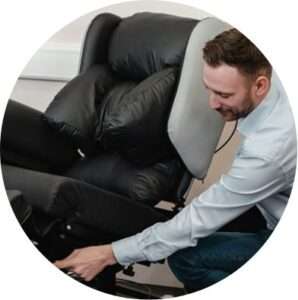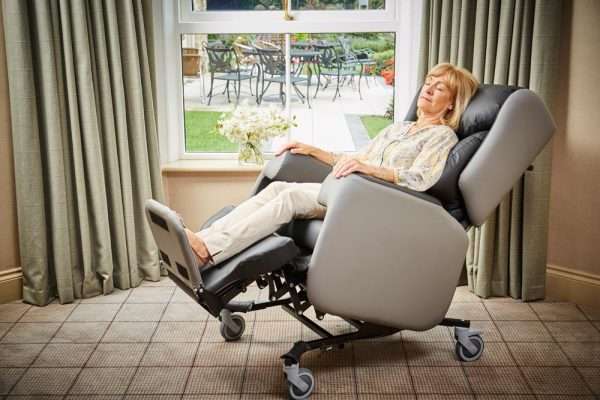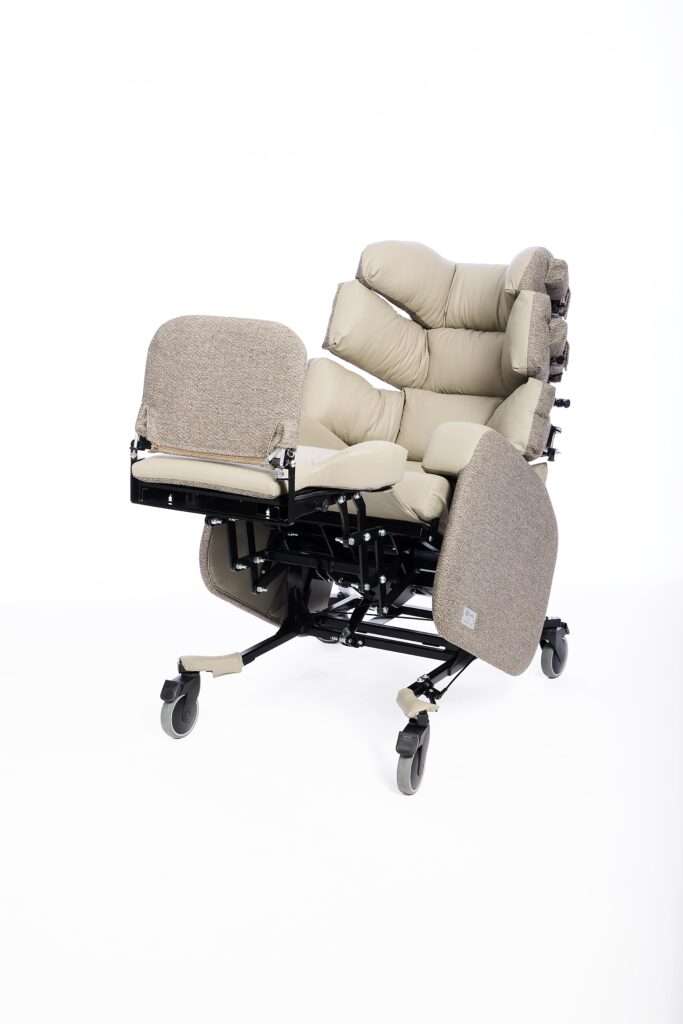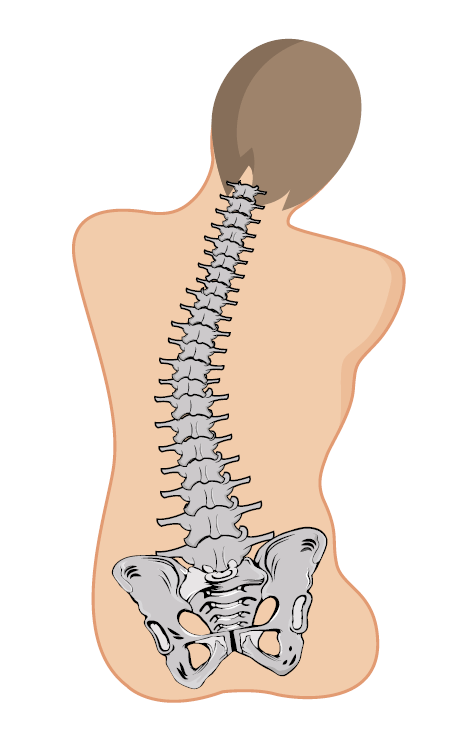Written By The Occupational Therapy Service for Vivid.Care
Contracted legs, often resulting from muscle contractures, are a common and complex issue encountered in a wide range of clinical settings, from care homes to community rehabilitation. For occupational therapists, understanding how contracted legs influence a person’s occupational performance is essential—not just from a physical standpoint, but also in terms of an individual’s engagement in meaningful activity.
This article explores what contracted legs are, how they develop, their implications on function, and importantly, how specialist seating can be used as both a preventive and therapeutic tool. For therapists, our role is pivotal—not only in supporting the individual but also in guiding multidisciplinary teams and carers in managing and improving outcomes for those affected.
Jump straight to…
-
- What Are Contracted Legs?
- What Causes Contractures in the Legs?
- Types of Contractures
- What Are the Signs of Muscle Contractures?
- What Complications Can Muscle Contractures Cause?
- How to Prevent Contracted Legs
- How to Treat Contracted Legs
- Can You Reverse a Contracture?
- How We Can Help with Contracted Legs
- How Seating Helps
- Conclusion
What Are Contracted Legs?
Contracted legs refer to a loss of full range of motion in the leg muscles or joints, often due to chronic muscle shortening. This condition can develop over time due to immobility, neurological impairment, trauma, or certain diseases. The result is a stiff, bent, or fixed limb posture that impairs mobility, balance, seating, and overall function.
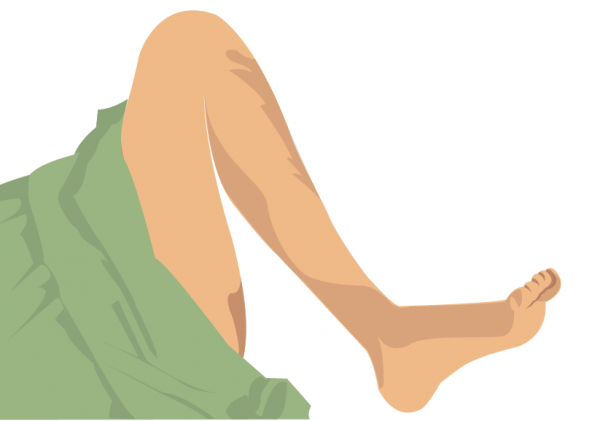
Knee contracture
What Causes Contractures in the Legs?
The development of leg contractures is multi-factorial:
- Neurological conditions such as stroke, cerebral palsy, multiple sclerosis, and spinal cord injury can lead to abnormal muscle tone and spasticity, which promote contracture formation.
- Prolonged immobility or poor positioning—especially in bed or standard seating—leads to joint stiffness and muscle shortening.
- Pain or joint dysfunction may cause a person to avoid movement, reinforcing muscular disuse and stiffness.
- Skin integrity issues or fear of pressure injury may limit movement or appropriate handling, increasing risk.
- Cognitive impairment can also lead to decreased movement or compliance with therapeutic routines, contributing to the development of contractures.
Types of Contractures
There are different types of contractures, depending on the structure involved:
- Myogenic contractures involve the muscle tissue itself.
- Arthrogenic contractures affect the joint or joint capsule.
- Neurogenic contractures are caused by central or peripheral nervous system disorders, often seen in conditions such as stroke or cerebral palsy.
- Fibrotic contractures occur due to scar tissue formation, which permanently alters the tissue structure.
Understanding the origin is essential for tailored intervention, something occupational therapists are uniquely positioned to assess.
What Are the Signs of Muscle Contractures?
Identifying contractures early is critical in preventing further functional loss.
Early Indicators:
- Reduced joint range of motion
- Resistance during passive movement
- Persistent muscle stiffness
- Changes in posture (e.g. knees drawn up or legs rotated externally)
- Discomfort or pain when repositioning the leg
- Difficulty with weight-bearing or transfers
Left unaddressed, these signs can evolve into fixed deformities. This can be a bidirectional relationship, where anatomical formation can impact posture, such as with a Lordosis, Kyphosis or pelvic obliquity, or where posture can impact muscle contracture leading to posterior or anterior tilt, pelvic rotation, or ‘wind sweeping’ for example.
Book a Free Seating Assessment
What Complications Can Muscle Contractures Cause?
Contracted legs can significantly impact occupational performance, especially in activities of daily living (ADLs). They interfere with:
- Mobility and transfers: Contractures alter gait, restrict standing ability, and make safe hoisting or sliding board transfers more difficult.
- Seating and posture: Abnormal leg positioning increases the risk of pressure ulcers and spinal misalignment.
- Skin integrity: Tight limbs can cause friction, shearing, and increased risk of breakdown.
- Hygiene and dressing: Caregivers may find it challenging to access contracted limbs for cleaning or changing.
- Sleep and rest: Uncomfortable postures can interfere with sleep quality.
- Social engagement: Poor positioning may limit community participation and interaction, leading to social withdrawal.
Ultimately, the presence of leg contractures creates a cascade of occupational disruptions, affecting independence, quality of life, and emotional wellbeing.
How to Prevent Contracted Legs
Prevention is always preferable to intervention. Occupational therapists play a key role in implementing proactive measures.
Preventing leg contractures is a vital aspect of maintaining mobility, comfort, and occupational performance—especially for individuals at risk due to immobility, neurological conditions, or prolonged poor positioning. Prevention relies on early, proactive intervention led by a multidisciplinary team, with occupational therapists playing a key role.
Positioning is crucial. Ensuring the legs are supported in a natural alignment during sitting, lying, or transferring can reduce the risk of muscles shortening or joints becoming fixed. Using specialist seating with adjustable leg rests, lateral supports, and tilt-in-space functionality helps maintain joint integrity and reduces pressure on vulnerable areas.
Regular movement and stretching also form the foundation of contracture prevention. This includes encouraging active movement where possible and incorporating passive range-of-motion exercises into daily routines.
Use of orthotic devices, such as splints or footboards, may assist in maintaining limb alignment when mobility is limited. Occupational therapists can also educate caregivers on safe handling techniques and positioning strategies.
Ultimately, preventing contractures means protecting the individual’s ability to engage in meaningful activity, preserving independence, and improving long-term outcomes in care settings. Early action is always the best intervention.
Key preventative measures
(a) Positioning and Seating
One of the most effective preventive strategies is appropriate seating. Without correct support, muscle groups tighten, and joints adapt to poor positions.
- Specialist seating such as tilt-in-space chairs helps to distribute weight evenly, maintain alignment, and reduce pressure.
- Adjustable leg supports prevent flexion contractures by promoting extension or neutral positioning.
- Lateral and medial supports guide leg alignment, particularly in cases of windswept or abducted postures.
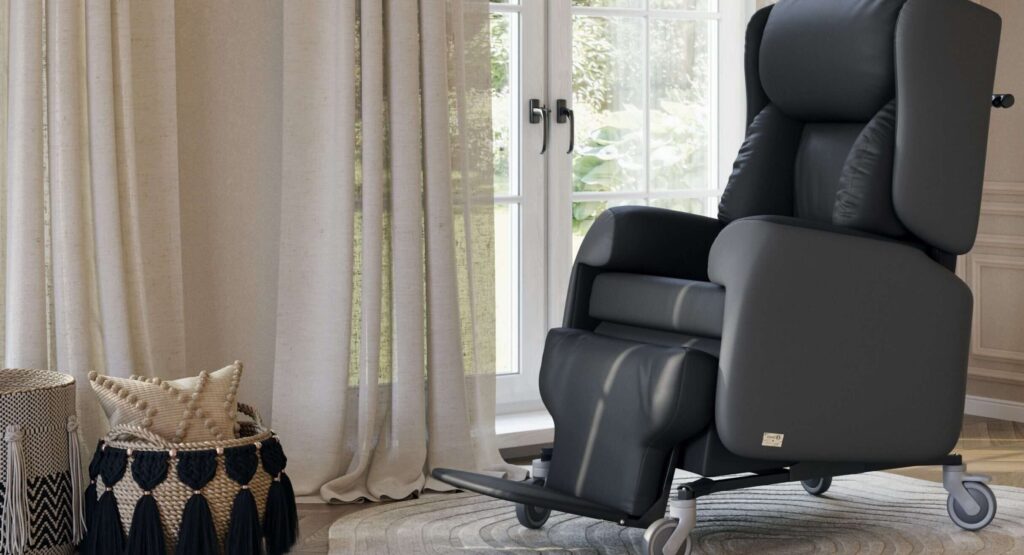
(b) Regular Movement and Stretching
- Incorporate passive and active range of motion exercises into daily routines.
- Encourage standing or weight-bearing activities, where possible, to maintain muscle length and bone density.
- Use splints or orthoses when appropriate to maintain joint position.
(c) Multidisciplinary Collaboration
Prevention works best through a team approach. Involving physiotherapists, nurses, carers, and family ensures continuity and consistency.
How to Treat Contracted Legs
Once a contracture has developed, treatment aims to restore function as much as possible and prevent further deterioration.
Therapeutic Approaches
- Stretching and passive range-of-motion exercises are often the first line of intervention.
- Serial casting or splinting may be used to gradually increase joint mobility.
- Heat therapy or ultrasound can prepare tissues for stretching.
- Botulinum toxin injections may reduce spasticity in neurogenic contractures.
- Surgical release or tendon lengthening is considered in severe, unresponsive cases.
Occupational therapists are vital in functional rehabilitation, helping individuals relearn activities using adapted methods or equipment.

Can You Reverse a Contracture?
Reversal depends on the duration, severity, and cause of the contracture.
- Early-stage contractures may respond well to conservative management.
- Long-standing or fibrotic contractures are often irreversible, though comfort and function can still be improved.
- Even when full reversal isn’t possible, enhancing positioning, access, and participation remains essential for quality of life.
How We Can Help with Contracted Legs
Vivid Care provide solutions that support clinicians and individuals in both preventing and managing leg contractures. Their range of specialist chairs is designed with flexibility, adjustability, and clinical integrity in mind.
View Our Full Seating Range
How Seating Helps
- Promotes Functional Positioning
Our chairs are engineered to support optimal leg positioning through customisable leg rests, pelvic alignment features, and lateral supports.
- Reduces Risk of Pressure Damage
Proper seating can redistribute pressure away from vulnerable areas on contracted limbs, reducing breakdown risk.
- Improves Comfort and Engagement
When a person is seated well, they are more likely to participate in meaningful activities, such as conversation, meals, or leisure.
- Enables Safer Transfers
Our chairs are compatible with hoist systems and transfer aids, improving safety for both clients and carers.
- Assists with Management Plans
As occupational therapists, you can use our seating to implement therapy programmes that include passive stretching and postural care.
The impact on occupational engagement
Muscle contractures, particularly in the legs, can severely limit an individual’s ability to engage in everyday occupations, those activities that bring purpose and structure to daily life. Whether it’s washing, dressing, eating, or simply sitting in a comfortable and supported position, contracted muscles can lead to pain, reduced mobility, and poor posture, all of which compromise independence and quality of life.
From an occupational therapy perspective, contractures do more than affect the physical body, they restrict access to meaningful occupation. A person with fixed flexion in the knees, for example, may struggle to maintain safe and comfortable seated postures, making it difficult to eat meals, hold conversations, engage in leisure, or even participate in therapy sessions. Poor seating posture can also cause fatigue, reduce concentration, and increase the risk of pressure injuries.
This highlights the critical link between muscle health and appropriate seating. Providing access to specialist seating solutions ensures optimal positioning, reduces the risk of further contracture, and supports engagement in core daily activities. Occupational therapists are uniquely positioned to assess these needs and recommend seating that enables participation.
Seating isn’t just physical support; it’s a gateway to meaningful life participation.
Recommended Products
- Lento Neuro Care Chair – designed for patients with neurological disorders, it has a negative leg angle to accommodate patients who may have muscle contractures as part of their condition
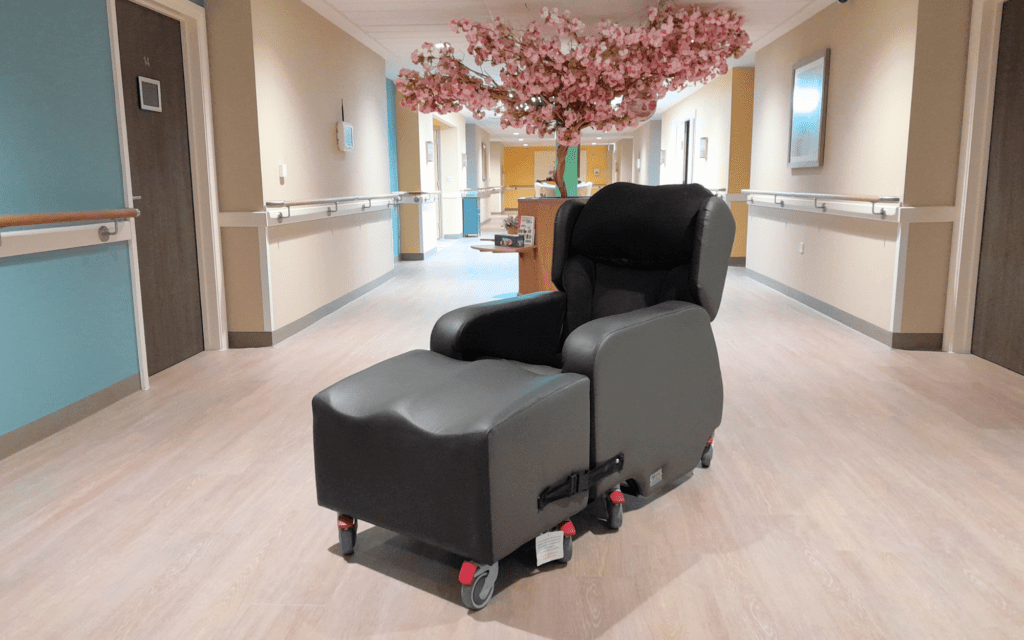
- Lento Mobile Care Chair – highly adjustable and portable, perfect for changing care environments.
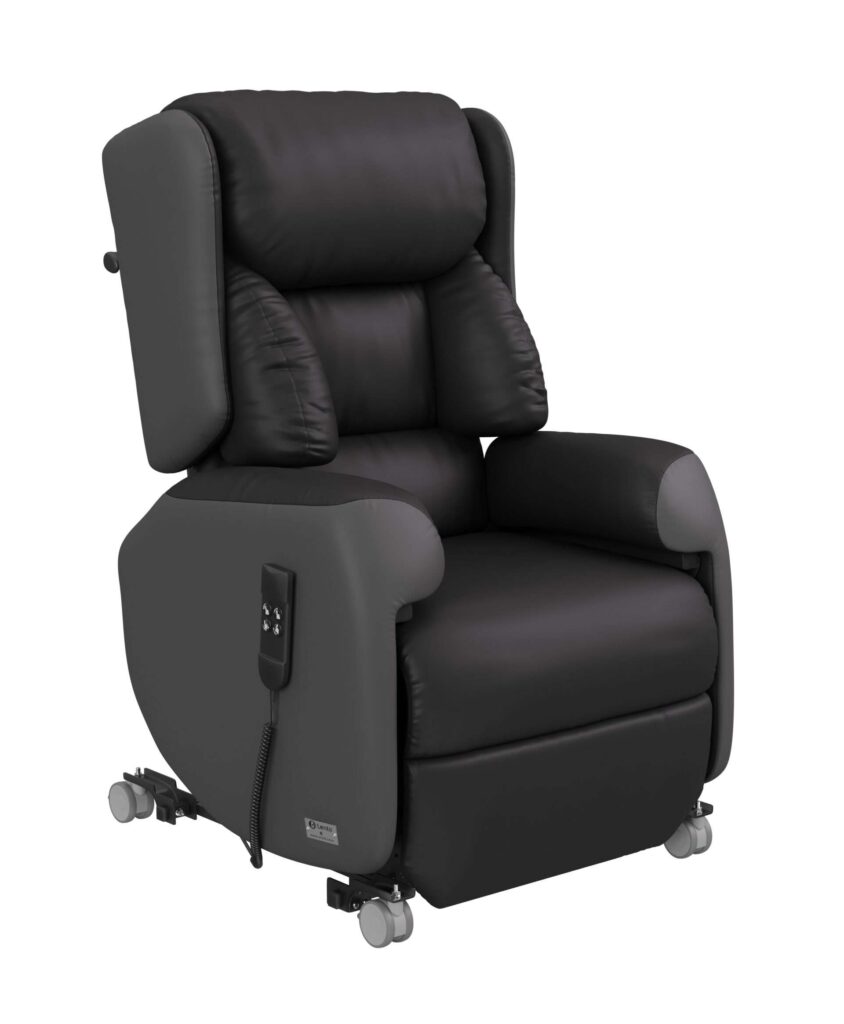
Browse the full range and see how our chairs are designed with therapy in mind.
Conclusion
Contracted legs are not just a postural or musculoskeletal problem—they’re a functional, occupational, and quality-of-life issue. For occupational therapists, the ability to assess, prevent, and intervene effectively in contracture management is fundamental. Beyond therapy, it’s about enabling people to live well, maintain dignity, and remain engaged in the things that matter most.
Specialist seating plays a central role in this process—providing the foundation for therapeutic positioning, preventing deterioration, and enabling participation in everyday life. At Vivid Care, we are proud to support occupational therapists with practical, evidence-based tools to enhance care.
If you’re managing clients with contracted legs or at risk of developing them, contact us for a seating assessment or explore our full range today.
Book a Free Seating Assessment



